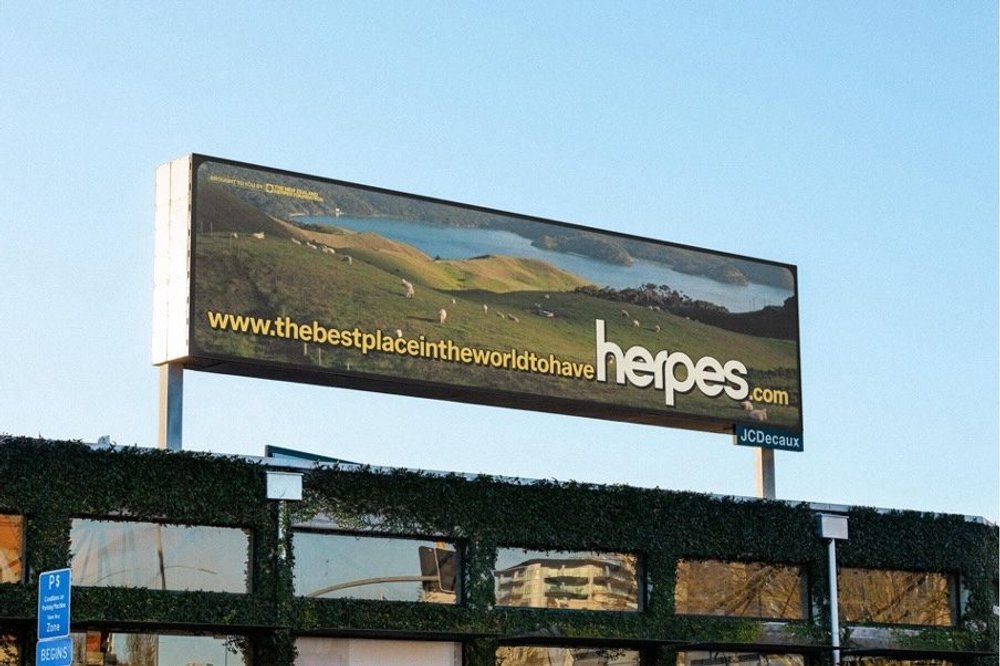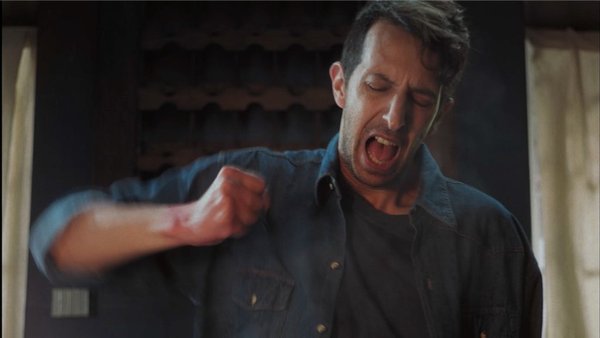Campaign of the Week
Make New Zealand The Best Place In The World To Have Herpes /
Herpes charity tackles stigma and misinformation with humorous educational course
Up to 80% of Kiwis contract oral or genital herpes at some point in their lives, yet research from independent insights agency TRA reveals that New Zealand has one of the highest rates of herpes stigma in the world. According to the New Zealand Herpes Foundation (NZHF), the stigma has a psychological impact – 30% of those diagnosed with herpes in New Zealand experience depressive or suicidal thoughts.
To fight the shame and isolation caused by this common and largely benign virus, NZHF partnered with Aotearoa-based agency Motion Sickness and production company Finch to create a series of educational films featuring local celebrities.
Sir Ashley Bloomfield, Sir Graham Henry, Sir Buck Shelford, Angella Dravid and Mea Motu are some of the presenters of the Herpes Destigmatisation Course, which condenses educational resources into accessible, approachable and comedic content.
The behaviour-change campaign, launched on Global Herpes Awareness Day (13 October 2024), suggests that destigmatising herpes could be the solution to New Zealand’s waning national pride.

Alongside the video content, the Make New Zealand The Best Place In The World To Have Herpes campaign is supported by the Herpes Stigma Index. Based on a survey by TRA of views on the Herpes Virus across 10 OECD countries, the index ranks the countries in terms of stigma. At the start of the campaign, Spain was in first place with the lowest national Herpes Stigma and New Zealand was in ninth place, with the second-highest rate of fear of stigmatisation.
The live leaderboard and video lessons can be found at thebestplaceintheworldtohaveherpes.com, where visitors can watch and engage with the course content to reduce their own stigma and help their country gain points to climb the leaderboard. As the website reads, ‘With a little education, we can become the number one nation.’
Results / Since the campaign launched, Kiwis have helped New Zealand climb to sixth place (at the time of writing). According to the agency, within the first week, New Zealanders have amassed over 10,000 course views and the course content has been viewed more than 5 million times on social media. Across all channels the campaign has reached 740,566 unique Kiwis and Google Trends data shows an increase in searches for ‘herpes’.
Contagious Insight /
Reframe to cut through / This campaign effectively reframes the destigmatisation of herpes as a matter of national pride. As Claire Hurst, founding trustee for NZHF, said in a press release, the foundation has ‘tried to land a stigma breaking campaign for over 20 years and have never managed to crack it. We are simply floored by this campaign and couldn’t be happier with how it has navigated this challenging topic and made it approachable, Kiwi and fun.’ By promoting its efforts to ‘make New Zealand the best place in the world to have herpes’, NZHF gives Kiwis something to rally behind and therefore puts the issue on the national agenda; creating a live leaderboard to track herpes-shaming on an international level introduces a competitive element, further incentivising people to watch the content.
For more examples of how brands can create new types of indexes as a way to raise awareness of societal issues and establish themselves as an authority on those matters read our Creative Tactic on indexes.
Find the funny side / In terms of tackling the stigma, just putting the word ‘herpes’ in big type on outdoor ad spaces across New Zealand does a lot of legwork. The travel poster-style creative is incongruous with traditional health marketing, as is the irreverent, comedic tone of the educational video content.
This campaign fits into a wider trend of brands in the pharma, wellness and healthcare categories subverting norms and taking themselves less seriously. Dramamine’s documentary The Last Barf Bag, prostate cancer charity Prost8’s cheeky outdoor campaign, and Specsavers’ tie-up with Rick Astley for the Misheard Version are prime examples. ‘Healthcare work can too often feel overly serious and fearmongering,’ said Golin CCO George Bryant, of the Specsavers work. ‘But by bringing levity and wit to the category, we were able to destigmatise the issue and drive real commercial success.’ In NZHF’s case, the levity of the campaign lends itself to the overall message – that herpes is no big deal, pretty much everyone gets it, and there’s nothing to be ashamed about.
Want more of the same? /
We don’t just write about best-in-class campaigns, interviews and trends. Our Members also receive access to briefings, online training, webinars, live events and much more.







